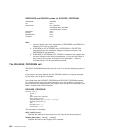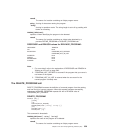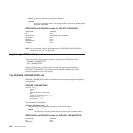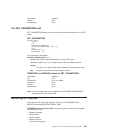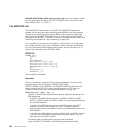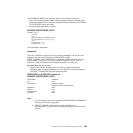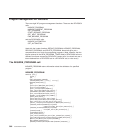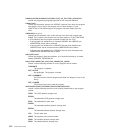"string"
A string, enclosed in quotation marks, and possibly containing blanks.
This value is processed in the same way as the “string” above.
Note: If, when defining the EMP in the MCT, you do not specify an entry name,
the entry name defaults to ‘USER’. ENTRYNAME likewise defaults to
‘USER’ if not specified.
POINT(expression | name2 | (Rn))
specifies the monitoring point identifier as defined in the MCT, and is in the
range 0 through 255. Note, however, that point identifiers in the range 200
through 255 are reserved for use by IBM program products.
expression
A valid assembler-language expression that can be expressed in 2
bytes.
name2
The name of a 2-byte source of point data
(Rn) A register containing the point data in the low-order 2 bytes
RESPONSE and REASON values for MONITOR:
RESPONSE REASON
OK None
EXCEPTION DATA1_NOT_SPECIFIED
DATA2_NOT_SPECIFIED
POINT_NOT_DEFINED
INVALID_DATA1_VALUE
INVALID_DATA2_VALUE
DISASTER None
INVALID None
KERNERROR None
PURGED None
Note:
1. For more detail, refer to the explanation of RESPONSE and REASON in
“Making an XPI call” on page 308.
2. ‘POINT_NOT_DEFINED’ means that the EMP you have specified was
not defined in the MCT.
3. ‘INVALID_DATA1_VALUE’ and ‘INVALID_DATA2_VALUE’ are most likely
to have been caused by provision of bad addresses; this causes a
program check.
4. DATA1_NOT_SPECIFIED and DATA2_NOT_SPECIFIED mean that you
have not specified DATA1 or DATA2 respectively when the operation
required them. See the description of DATA2.
5. Any error response terminates processing of the EMP. Operations
defined to execute before the point of failure will have done so; later
operations are canceled.
The INQUIRE_MONITORING_DATA call
The INQUIRE_MONITORING_DATA function returns to the exit program the
performance class monitoring data that has been accumulated for the issuing task.
364 Customization Guide





